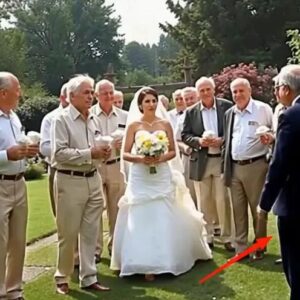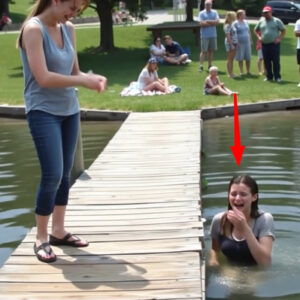Few experiences in life are as calming as immersing oneself in the natural world. There’s a unique sense of peace that comes from escaping the constant buzz of urban life—walking along meandering woodland trails, feeling the soft crunch of leaves underfoot, or simply pausing to listen to the gentle hum of birdsong. For many, nature isn’t just a retreat; it’s a restorative ritual. A weekend hike or a quiet afternoon stroll through a forest can work wonders for both the mind and the spirit, offering a rare opportunity to slow down, breathe deeply, and reconnect with a simpler, quieter pace of life.
For countless nature enthusiasts, these moments also provide a chance to indulge in one of their favorite hobbies: capturing the fleeting wonders of the outdoors on camera. Whether it’s a rare bird, a delicate flower, or the intricate patterns of tree bark, there is always something extraordinary waiting to be observed—if you have the patience to look closely.
Kym Beechey, an Australian woman with a deep love for the outdoors, has embraced this practice wholeheartedly. Kym isn’t a professional photographer, but she carries her camera—or sometimes just her smartphone—with her everywhere she goes. For her, photography is more than just taking pictures; it is a way of telling stories, preserving memories, and celebrating the beauty of nature. Over the years, her collection has grown into a charming archive of encounters both extraordinary and everyday, from the glint of sunlight on a river’s surface to the delicate dance of insects in the underbrush.
On one particular day, Kym set out for what she expected to be a routine walk through a wooded area near her hometown. She had her camera at the ready, as always, hoping to spot something unusual—maybe a bird she hadn’t seen before, a flower blooming out of season, or even a tiny creature going about its daily life. As she wandered along the shaded paths, the soft rustle of leaves and distant birdcalls enveloped her in a sense of serenity. She felt, in those quiet moments, the kind of contentment that only comes when one is completely present in nature.
Then, as she rounded a bend in the trail, she thought she saw something extraordinary. Nestled among the ferns and low-lying shrubs was a tiny creature that, at first glance, appeared to be a newborn bird. Its rounded body, stubby features, and the subtle tilt of what looked like a beak gave it the unmistakable appearance of a fledgling—a young tawny frogmouth, a species of owl native to Australia known for its expressive, almost human-like face.
Kym’s heart skipped a beat. She had read that tawny frogmouths are notoriously elusive and that spotting one, especially a juvenile, was a rare treat. Without hesitating, she lifted her phone and began preparing for the perfect shot. She moved slowly and deliberately, careful not to startle the tiny creature, and framed it as best as she could. The sunlight filtering through the trees highlighted what seemed like a faint smile on the “bird’s” face, making it even more captivating. For a brief moment, Kym felt as though she had stumbled upon a secret world, a quiet miracle tucked away in the undergrowth.
She took several photographs, each one more satisfying than the last, capturing the delicate nuances of her tiny subject’s apparent expression. It seemed almost as if the bird was acknowledging her presence, and Kym couldn’t suppress a grin at the thought. Finally, satisfied with her shots, she took a closer look at her images to review the results. And that’s when she realized something both surprising and utterly amusing.
The “bird” she had been so careful to photograph was not a bird at all. In fact, it wasn’t an animal of any kind. What she had admired from a distance was actually a banksia pod—a seed pod produced by banksia trees. These pods, which can be highly textured and oddly expressive in shape, are notorious for their resemblance to small, round birds, particularly from a distance. The realization hit Kym with a mixture of humor and relief. She laughed aloud, the sound echoing softly through the trees, and couldn’t help but marvel at the natural trickery of her surroundings. What she had thought was a lively little creature with a playful smile was, in reality, an inanimate pod, patiently resting on the forest floor, waiting for no one.
Banksia trees, known for their unique and often sculptural seed pods, are found primarily in southwestern Australia but have also been introduced to regions like Papua New Guinea and New Zealand. While their cones are sometimes compared to those of pine trees, they are not true conifers. The appearance of banksia pods is heavily influenced by their natural reproductive cycle. In many species, the pods remain tightly closed until exposed to the intense heat of a bushfire, at which point they split open to release seeds onto the nutrient-rich ash of the forest floor—a remarkable evolutionary adaptation ensuring the survival of the species. The complex shapes and textures of these pods have long fascinated botanists and amateur photographers alike, making them both a challenge and a delight to document.
For Kym, the encounter was a reminder of just how deceptive nature can be. It’s easy, when wandering through dense woods or exploring unfamiliar terrain, to misinterpret the subtle visual cues around you. Shadows, light, and perspective can combine in surprising ways, transforming a simple plant structure into the semblance of a living creature. Yet it is precisely this element of surprise, this playful ambiguity, that makes nature photography so compelling. Every walk is a lesson in observation, patience, and humility—a reminder that not everything is as it first appears.
After reviewing her photos, Kym shared her experience with friends and followers online. The images of the banksia pod, taken with such reverence and anticipation as if it were a living bird, quickly became a source of amusement and fascination. People marveled at how easily the pod had fooled her, noting that even experienced naturalists could occasionally be tricked by such illusions. Many commented on the beauty and detail of her photographs, praising her skill in capturing texture, light, and shadow in a way that brought the scene vividly to life.
In reflecting on the incident, Kym acknowledged that part of the joy of being outdoors lies in these unexpected surprises. “Nature keeps you humble,” she said. “You think you know what you’re seeing, but sometimes it’s a gentle reminder that there’s always more to learn and discover. That little pod looked so much like a bird that for a moment, I completely forgot it wasn’t alive. And honestly, that’s what makes it fun—it’s like the forest was playing a little game with me.”
Her story also serves as a gentle reminder to other nature enthusiasts and photographers: the magic of the outdoors is not always in what is real or rare, but in what captivates the imagination. A twisted branch, a peculiar leaf, or a banksia pod masquerading as a fledgling bird can inspire curiosity, wonder, and delight. The forest, after all, is filled with hidden treasures, waiting for those patient enough to look closely, and for those willing to embrace both discovery and surprise.
Kym’s encounter with the banksia pod has since become one of her favorite stories to tell. Beyond the humor, it highlights the importance of slowing down, observing carefully, and appreciating the subtle beauty in everyday surroundings. It reminds us all that sometimes the most memorable experiences are not those that are meticulously planned or anticipated, but those that catch us off guard, bringing laughter, reflection, and an even deeper appreciation for the natural world.
Moreover, this little incident touches on a broader truth about human perception. Our brains are wired to recognize patterns, to identify faces and forms even where none exist. This phenomenon, known as pareidolia, is why we sometimes see animals in clouds, faces in rock formations, or expressions in inanimate objects. Kym’s moment in the woods perfectly exemplifies this fascinating aspect of human psychology, showing how our minds can turn ordinary objects into seemingly animated figures, especially when viewed with curiosity and attention.
While the banksia pod may have initially seemed like a small, smiling bird, the joy and amusement it brought to Kym were entirely real. In the end, it didn’t matter that the creature wasn’t alive—it had sparked delight, inspired her photography, and gifted her a memorable story to share. For those who love nature, that is the ultimate reward: the endless potential for surprise, wonder, and connection, even in the smallest of encounters.
So the next time you wander through a forest, pause and look closely at the world around you. You may not always find the bird, animal, or rare flower you expect, but you are guaranteed to discover something that captures your imagination. Sometimes, the most enchanting moments are those that remind us just how playful, mysterious, and unexpectedly charming the natural world can be. And perhaps, like Kym, you will leave with a photograph, a story, and a smile—a gentle testament to the wonder that lies in both seeing and imagining the extraordinary in the ordinary.





